Selecting the ideal rabbit breed can be difficult because rabbits have many different types, sizes, colors, and personalities. If you’re considering adopting a rabbit, we have all the information you need to help you select the ideal furry friend.
When you see a rabbit, you know it. Although there may be differences in color, size, fur type, behavior, and other characteristics, you already know that rabbits can hop and have large ears and little tails.
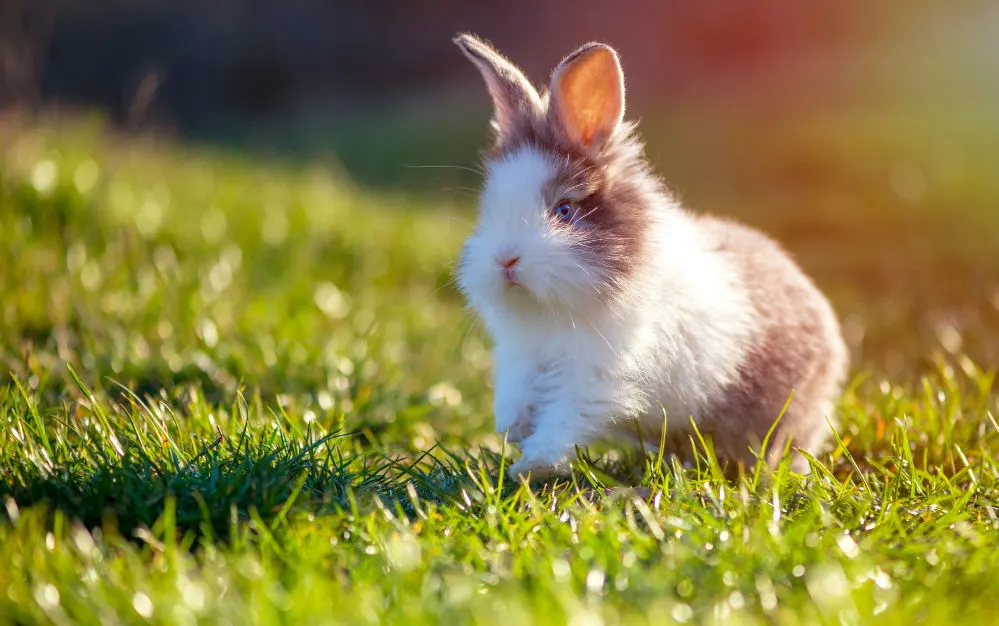
Regardless of breed, your rabbit is a family member, and you adore them. You might even have a rabbit of mixed heritage. Learning about different rabbit breeds is entertaining because it’s like tracing your bunny’s ancestry.
So let’s hop into the world of rabbit breeds and exactly how many different types there are.
Tip: Look at this rabbit house guide to ensure you get the perfect home for your new fluffy friend.
How many breeds are there?
Lagomorpha is the name of the group of animals that includes rabbits. Lagomorpha is thought to have originated in Asia during the Eocene epoch, at least 40 million years ago, according to fossil evidence. With the exception of Australia, the division of the continents during this time may be to blame for the widespread distribution of several species of rabbits and hares worldwide.
The European rabbit (Oryctolagus cuniculus), the only species of rabbit that has been widely domesticated, is the ancestor of the more than 60 recognized domestic breeds of rabbit that are currently in existence in Europe and America. It belongs to a different species than other native rabbits, including cottontail and jackrabbits from North America and all hare species.
Domestic rabbits were only produced for their meat and fur until the 19th century. Still, during the Victorian era, several new “fancy” varieties were created for breeding rabbits for exhibiting.
Due to industrialization, many individuals who moved from the countryside to the growing towns and cities also brought rabbits because, aside from chickens, they were the only “farm” animal that could be kept successfully in urban settings.
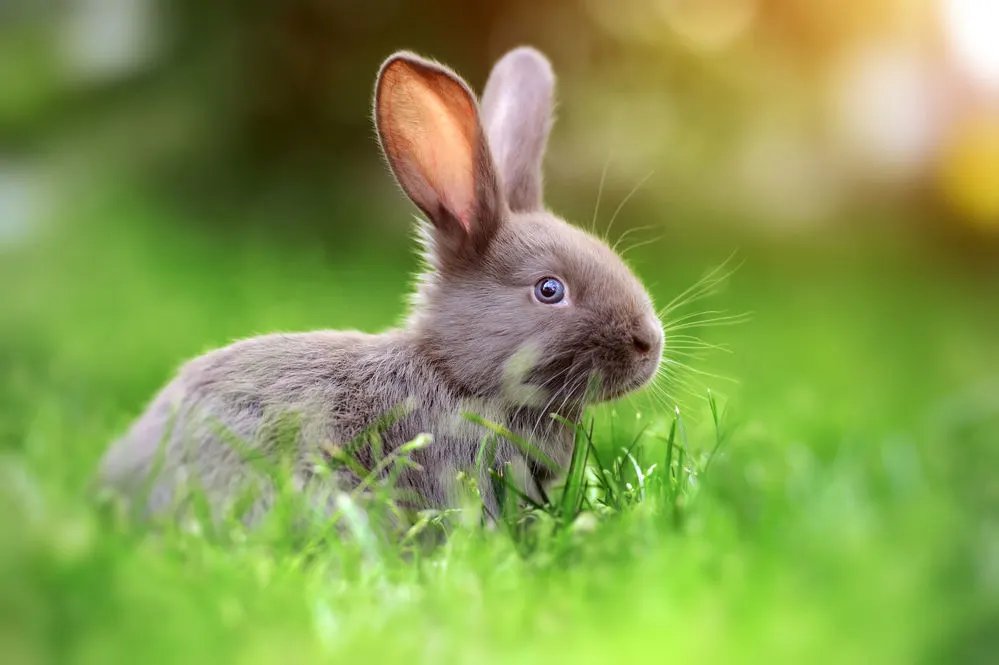
Even though many of these rabbits were raised for meat, keeping rabbits as pets became increasingly popular among the growing middle class.
60 different breeds of rabbits in over 500 variations exist now, and more are being created every day. While some breeds are essentially unknown outside their area of origin, others may be found in almost every country where rabbit enthusiasts exist.
Numerous breeds have also been produced in various nations to relatively varied breed standards and may even go by different names.
The American Rabbit Breeders Association (ARBA) recognizes 50 rabbit breeds nationwide, plus 13 cavy breeds (which we’ve added in here too!). The Lionhead and the Argente Brun are two breeds that were recently identified.
The British Rabbit Council recognizes more than 75 rabbit breeds. Every rabbit breed has a breed standard established by the association representing that breed. Rabbit breeders strive to achieve this standard of perfection as they carefully breed these adorable furry creatures.
Top rabbit breeds
There are many breeds of rabbits, from fluffy white hoppers to bunnies that trip over their ears. Let’s go over the 50 most popular rabbit breeds accepted by the American Rabbit Breeders Association.
1. American
The American breed of rabbit is relatively uncommon. It is available in two solid colors (blue and white) and weighs roughly 12 pounds. The American is renowned for its lovely fur and pleasant disposition.
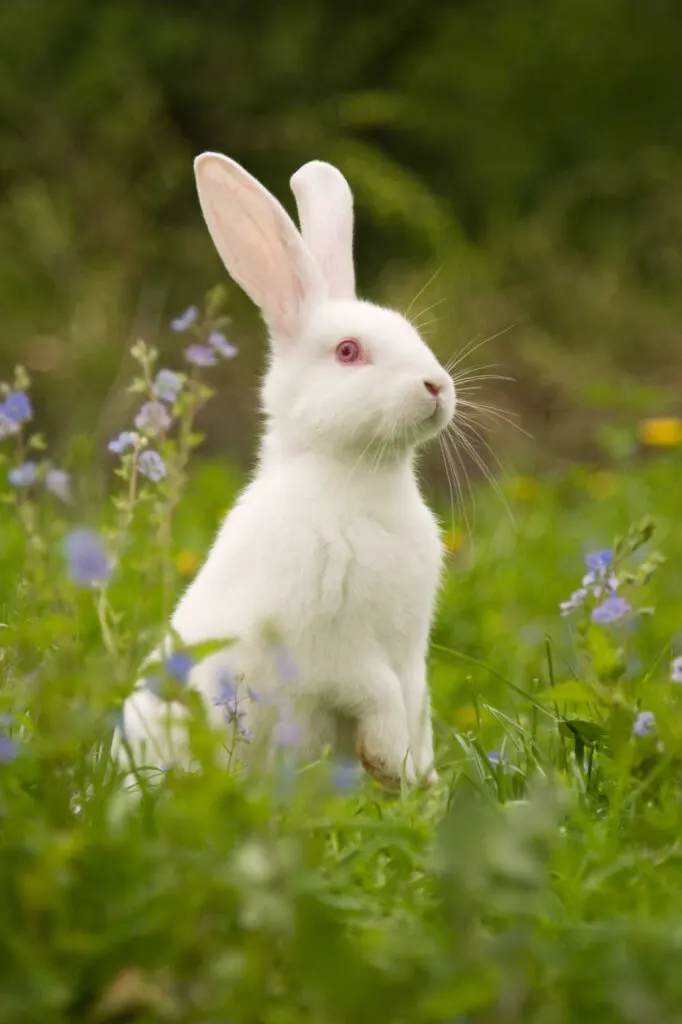
2. American Chinchilla
A British exhibitor sold two Chinchilla rabbits to two American rabbit breeders in 1919 at the New York State Fair. They then bred the bunnies to larger sizes and are credited with beginning the history of the American Chinchilla.
This is the rarest of the Chinchilla rabbit breeds and is gentle and hardy.
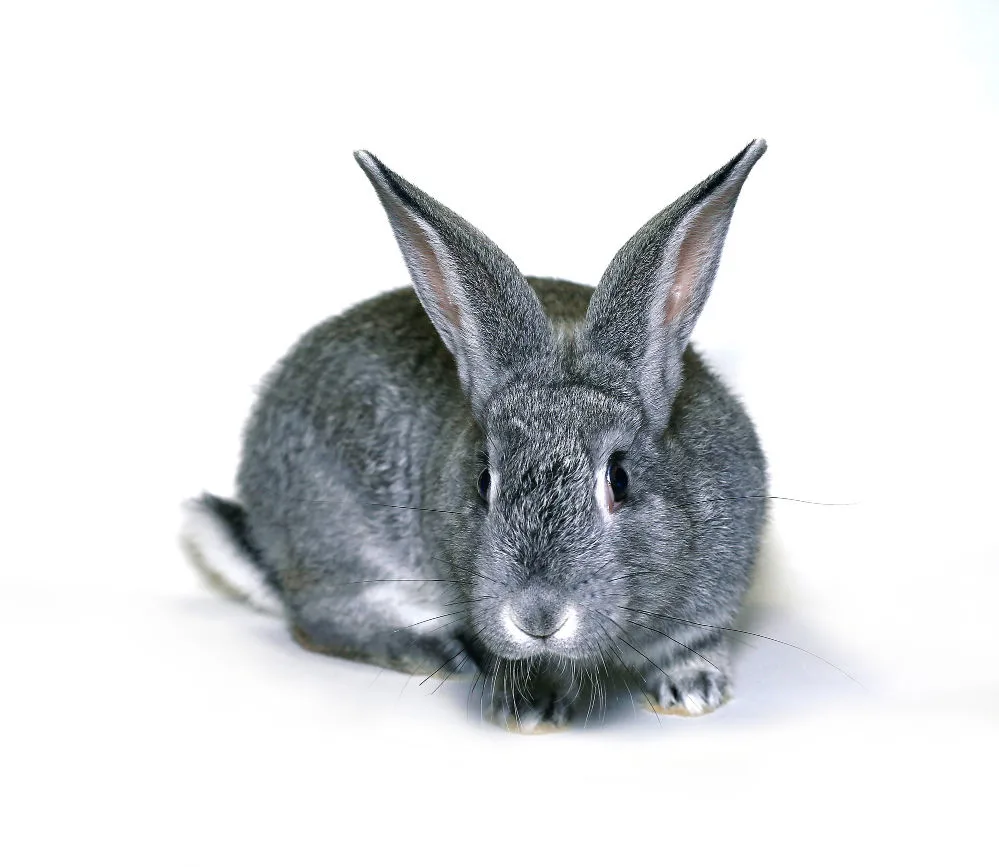
3. American Fuzzy Lop
American Fuzzy Lops, or “Fuzzies,” have longer, woolier-type fur, as their name suggests. It needs to be maintained on a tight schedule to avoid severe matting, so stock up on some rabbit grooming tools.
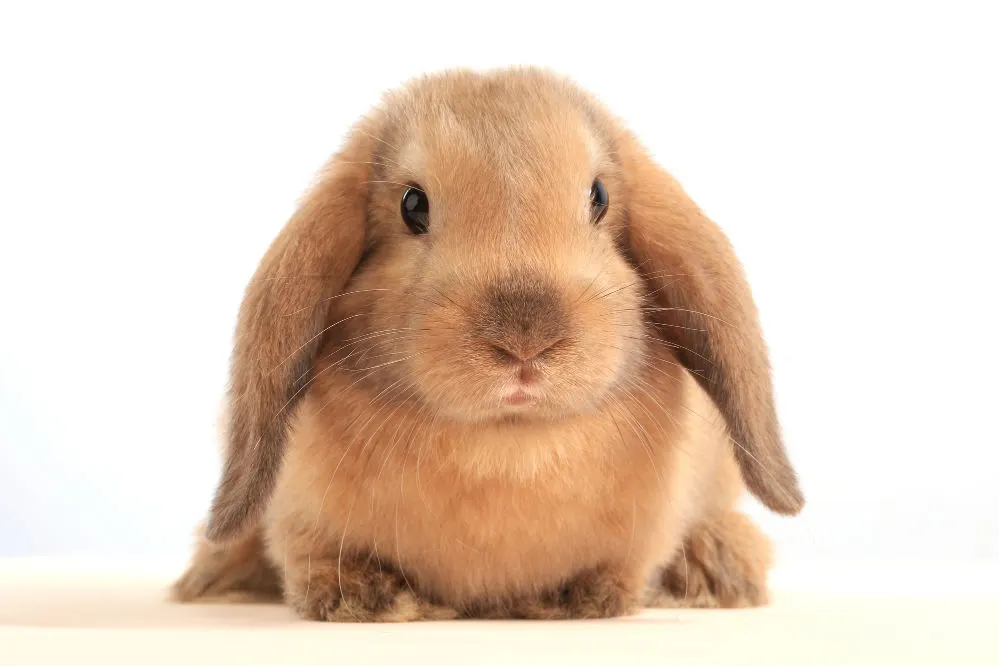
4. American Sable
The American Sable rabbit is distinguished by its two types of sable color. They have a plush brown coat that varies in tone from a dark sepia on top to a lighter sepia on the sides.
5. Argenté Brun
The Argente Brun is a gorgeous and eye-catching animal with a rich, glossy, silky coat with an intense chocolate undertone. These fluffy bunnies can weigh up to 10.5 lbs (4.8 kg).
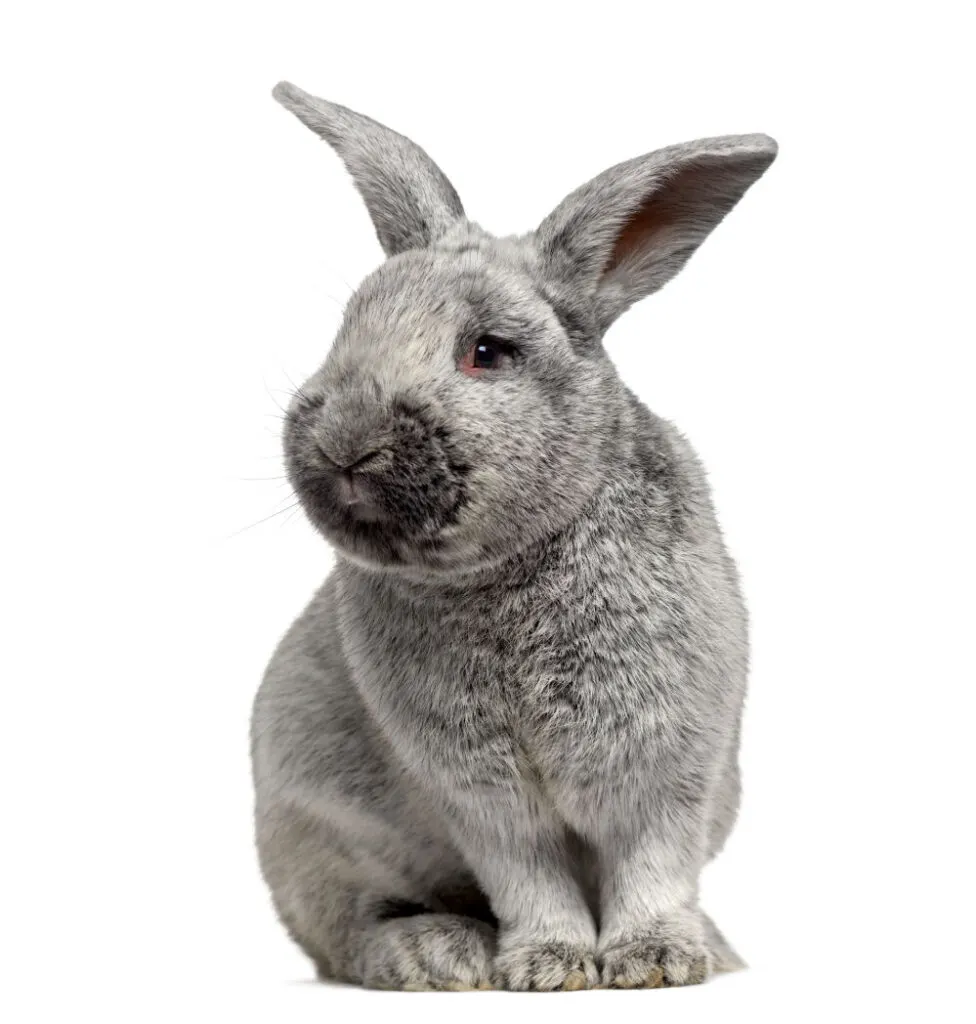
6. Belgian Hare
The Belgian Hare, one of the oldest breeds of rabbit in America, dates back to the 1880s. They were created in Eastern Europe in the early 18th century by carefully selected breeding of wild and domestic rabbits.
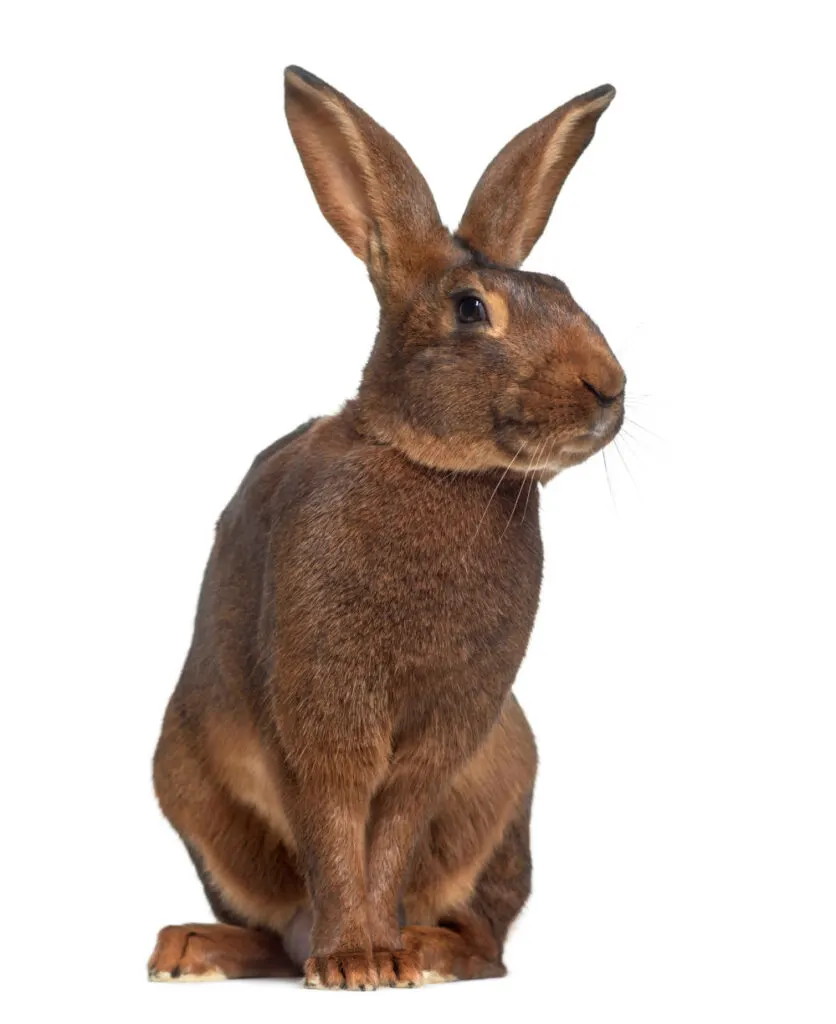
7. Beveren rabbit
The Beveren is a breed that is recognized for being calm and docile while being extremely lively and having interesting maneuvers. Both younger bunnies and adults make excellent pets or display animals.
8. Blanc de Hotot rabbit
The Blanc de Hotot is a native of France, and the “black eyeliner easily distinguishes it” that contrasts with the rest of its white body. Walking outside (with a leash) and setting aside time to clean their teeth are excellent opportunities to connect with them.
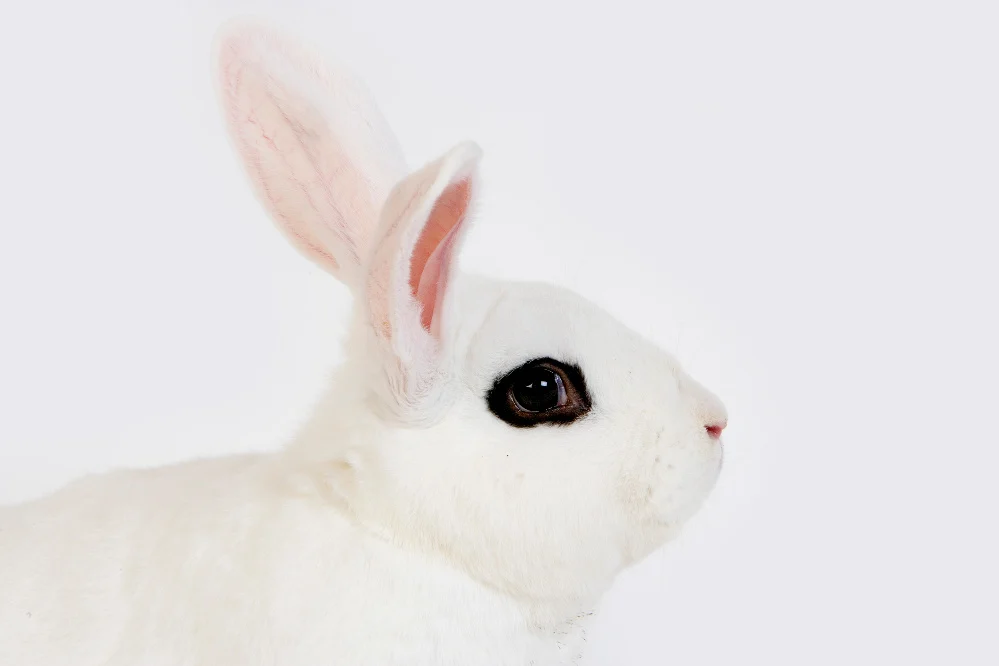
9. Britannia Petite
One of the smallest rabbit breeds approved by the ARBA is the Britannia Petite, also referred to as the “Polish” in Britain but is different from the American Polish rabbit. The Petite is more sensitive than other breeds and is active and enthusiastic.
10. Californian rabbit
The American Rabbit Breeders Association lists the Californian rabbit as one of its most popular breeds. These bunnies are easily recognized by their white bodies, colored ears, and markings on their noses, tails, and feet.
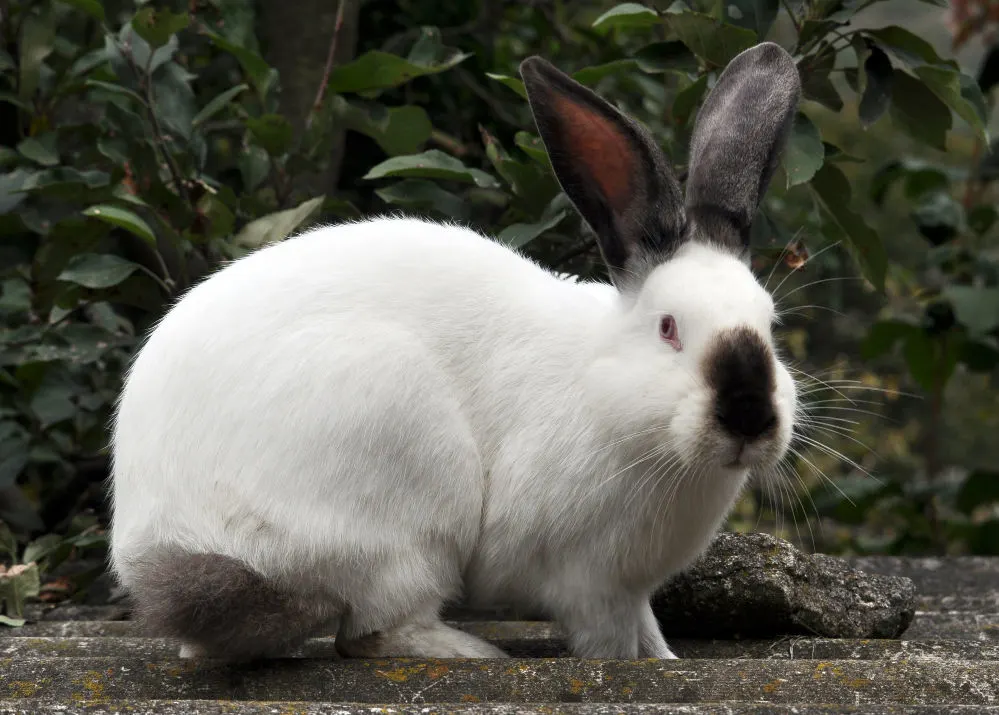
11. Cavies
The American Rabbit Breeders Association has recognized 13 cavie breeds. They encourage ethical breeding, displaying, and improvement of the cavie for exhibition as a pet and as a research animal. Cavies refer to South American rodents, such as guinea pigs, not an actual rabbit breed.
12. Champagne d’Argent
Champagne d’Argent translates to “silver (rabbit) of Champagne.” Although the exact origins are unknown, the breed may have existed in France by the middle of the sixteenth century.
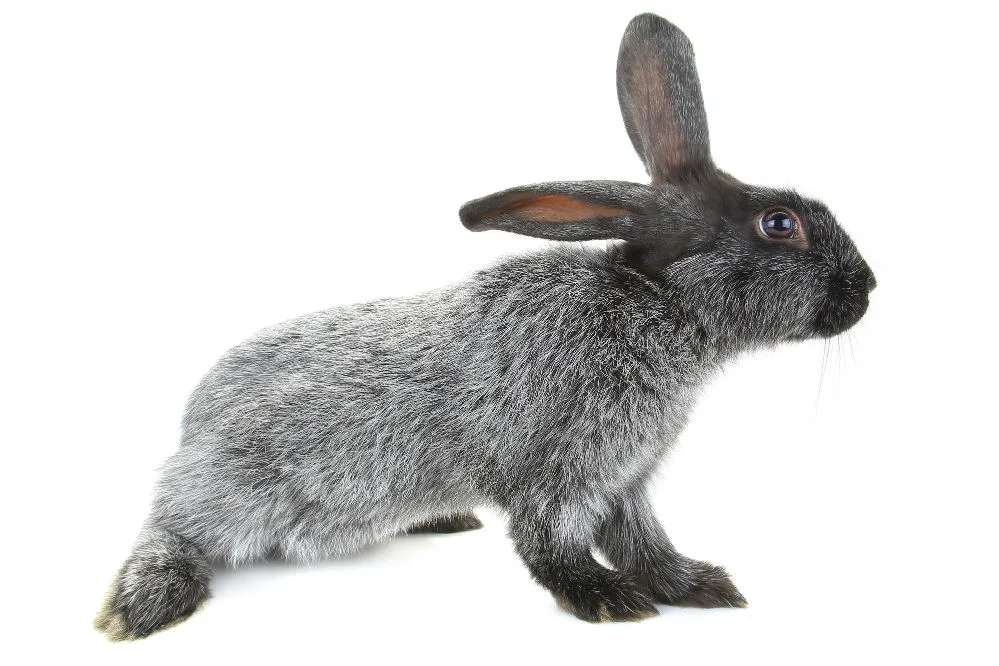
13. Checkered Giant rabbit
A Checkered Giant, which weighs around 13 lbs (5.8 kgs), is the perfect pet for a couple or senior citizens looking for company. Look for a Checkered Giant by its nose’s butterfly-like marking.
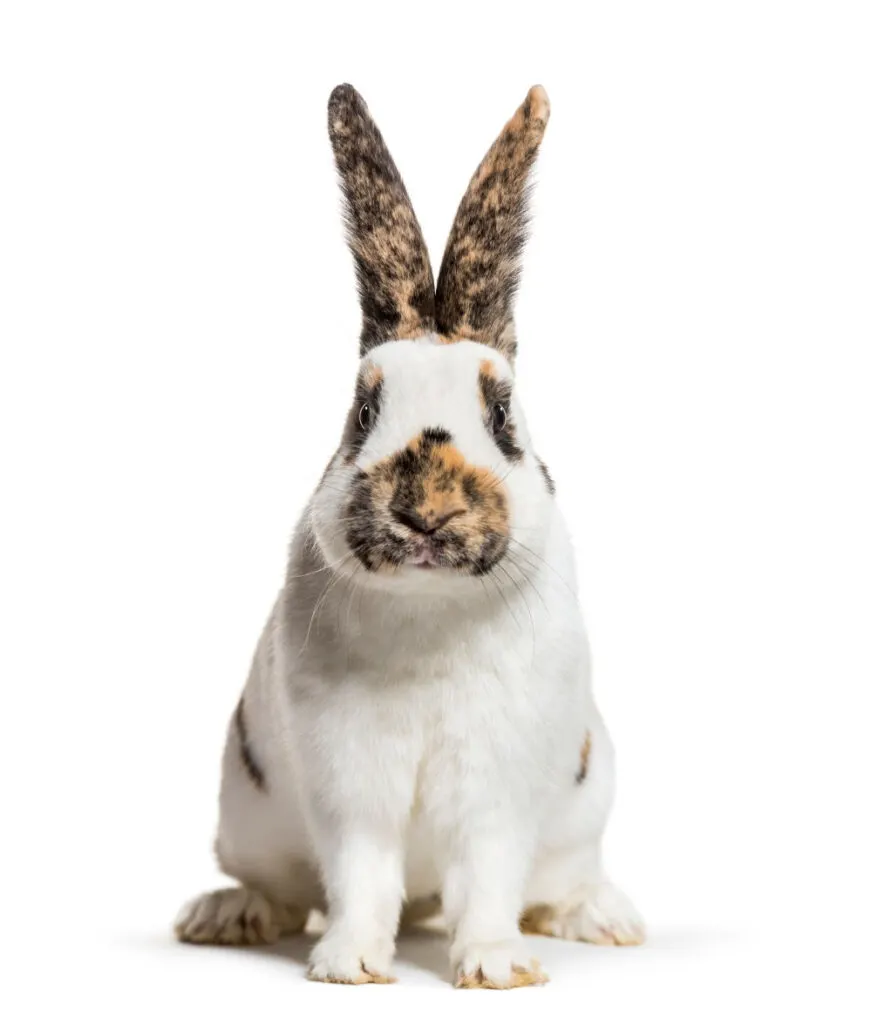
14. Cinnamon rabbit
The cinnamon rabbit gets its name from its short, glossy crimson coat. The Chinchilla doe and the New Zealand buck were crossed to produce the breed in the 1970s. On their cheeks and feet, they have rust-colored markings as well.
15. Creme d’Argent
The magnificent Crème d’Argent rabbit, one of the rarest breeds, stands out thanks to its creamy-white color and vivid orange under-color. Except for the US and the UK, this uncommon breed — which numbers less than 1,000 in the US — has vanished off the face of the earth.
16. Dutch rabbit
Dutch rabbits are renowned for their markings. All of these bunnies have dark ears and rumps. They also have a white band running from their shoulders to their bellies, white legs, and what is known as the “white blaze,” a wedge of white fur running up the front of their faces.
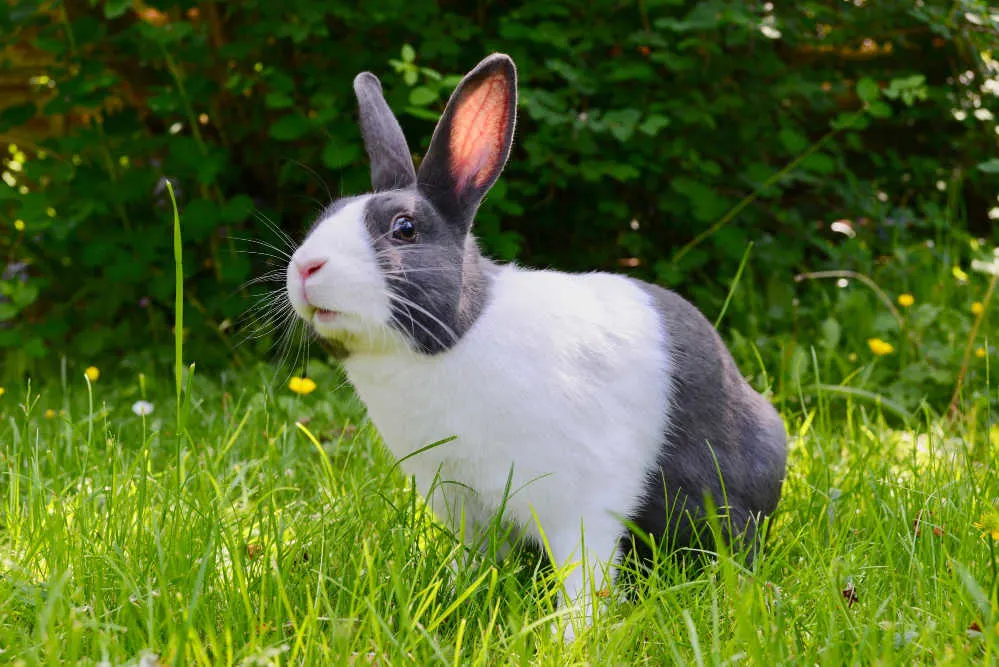
17. Dwarf Hotot
The Dwarf Hotot rabbit has a distinctive appearance; it is white with black “eyeliner” marks surrounding its dark eyes. It has a connection to the bigger Blanc de Hotot, from which it derived its attractiveness.

18. Dwarf Papillon
Zwergschecken, or dwarf Papillons, were created in Germany. This translates to Dwarf Check in English. At the 2015 Europa show in Metz, France, the concept for Dwarf Papillons was conceived.
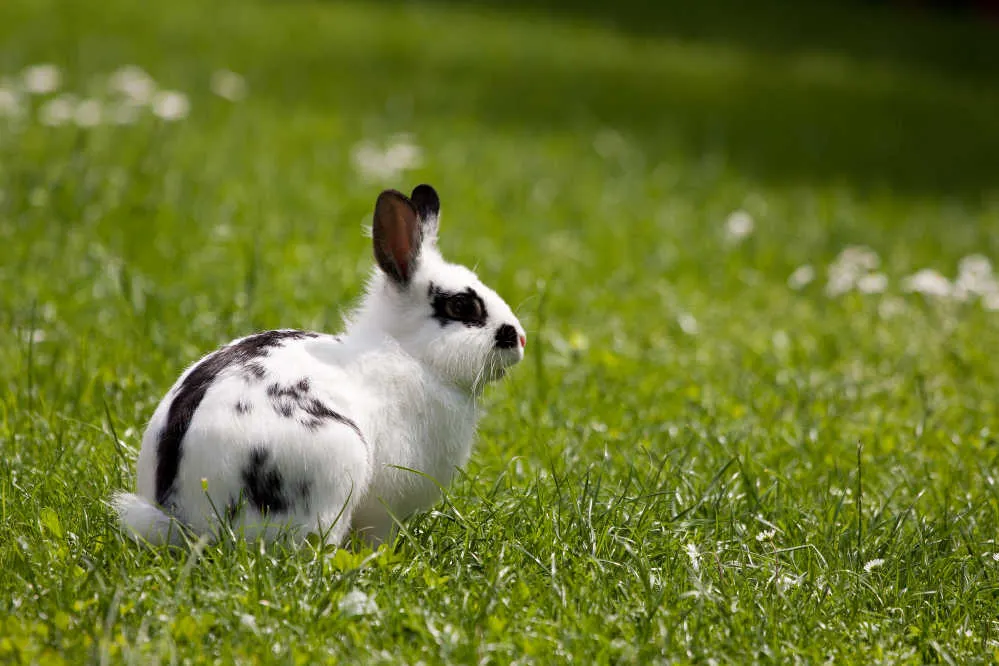
19. English Angora
The fluffy coat of the English Angora is well-recognized. The breed, which is the earliest domesticated rabbit breed, typically weighs 7.5 lbs (3.4 kgs) as an adult. These rabbits must be brushed daily because if they overeat their fur, they could become ill.
The Angora rabbits are sometimes viewed as show rabbits because of their gorgeous coat.
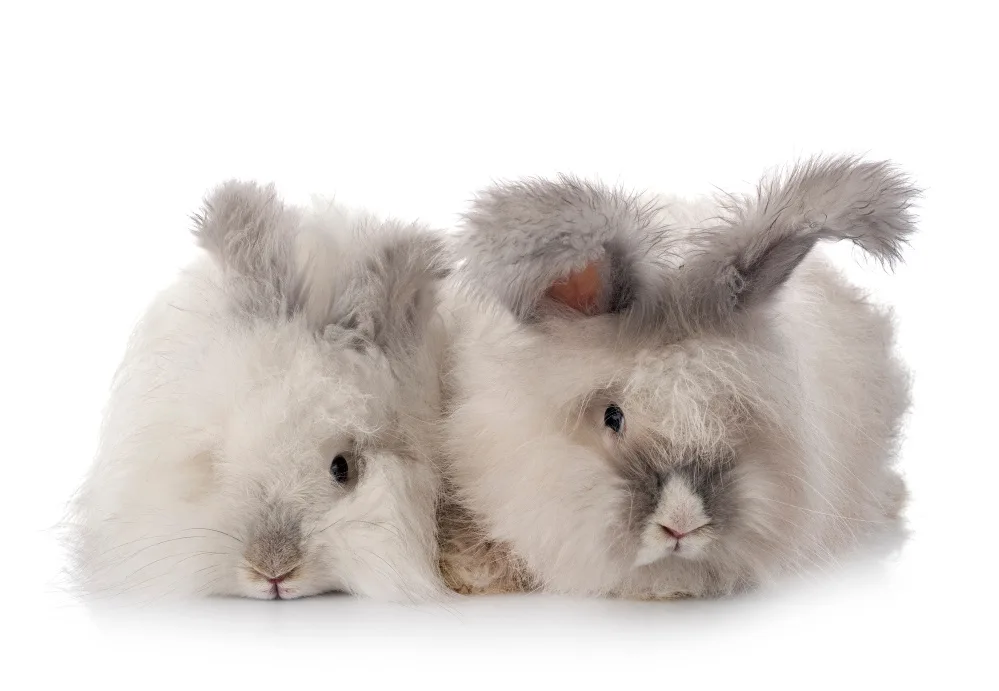
20. English Lop
The English Lop has the moniker “the Dog of the Rabbit World” due to its amiable and laid-back nature. It also holds the record for having the longest ears.
Thus, it should be no surprise that this distinctive trait needs some upkeep. Regular ear checks are necessary, and short nails are required (in case they step on their ears).
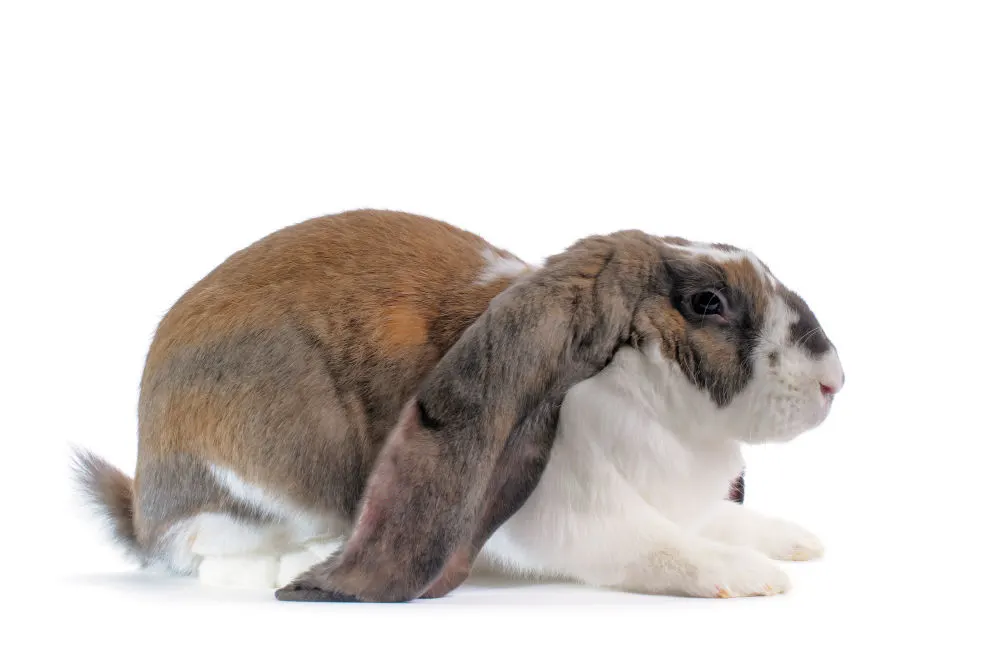
21. English Spot
After a long career as a show rabbit, the English Spot readily adjusted to life as a house pet, which helped it grow used to regular stroking and petting. The English Spot has specific markings on its snow-white body.
These include spine markings (herringbones), colored ears, eye circles, cheek spots, a butterfly mark on the nose, and a chain of spots along the body.
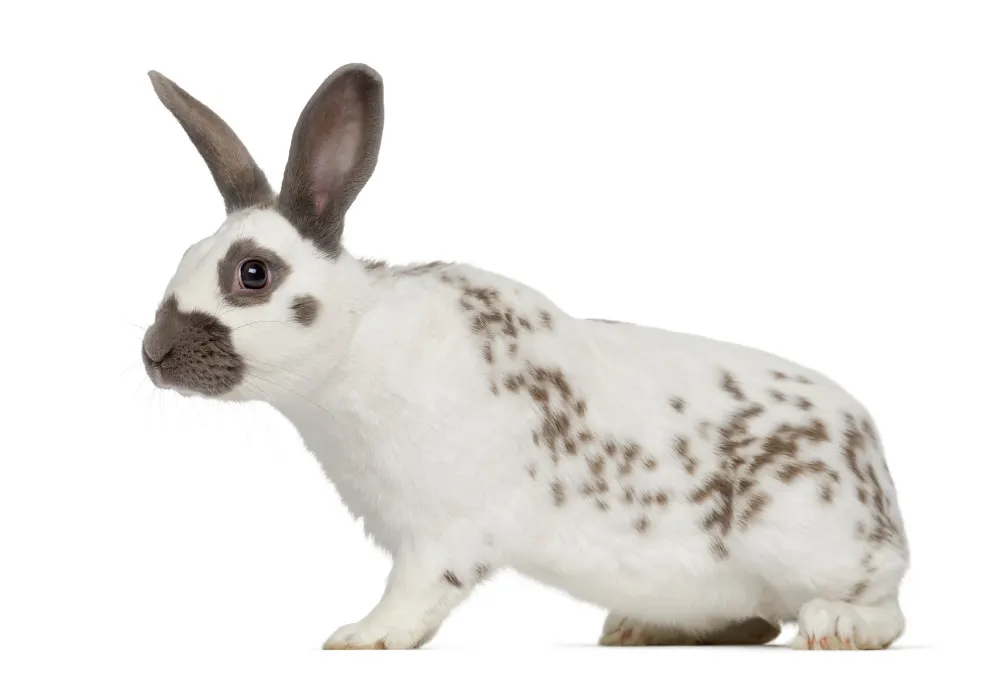
22. Flemish Giant rabbit
This “Gentle Giant,” weighing in at a whopping 22 lbs (9.9 kgs), is referred to as a global bunny. It’s not unusual to witness a Flemish Giant playing with dogs or cuddling with them if they live together.
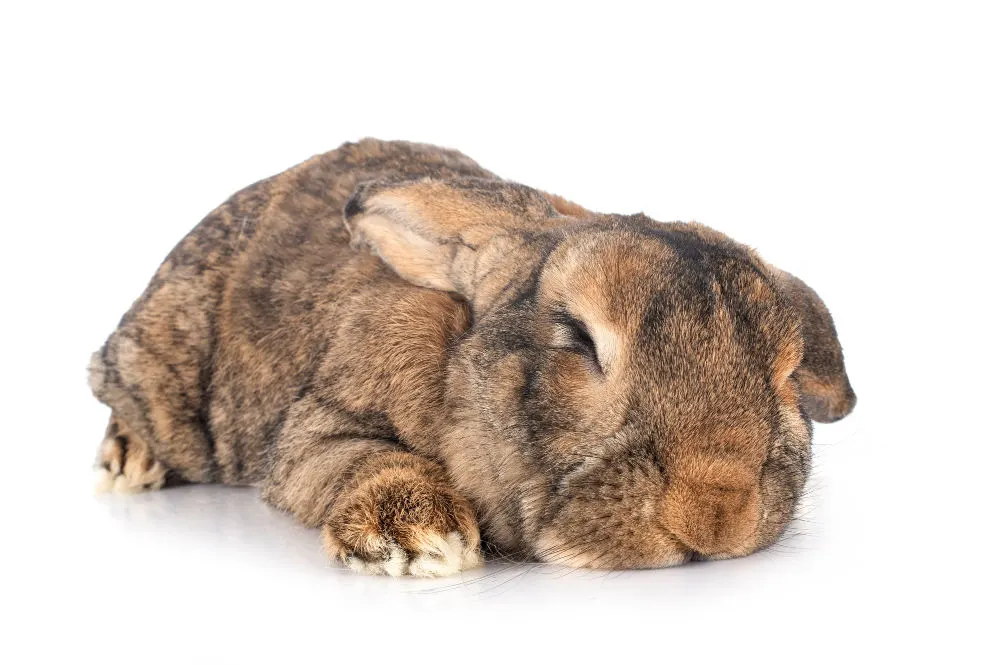
23. Florida White
The Florida White rabbit, a smaller breed developed in the 1960s for use as a laboratory bunny, is now a well-liked pet and competitive show rabbit. The Florida White is always completely white with red eyes, as its name suggests.
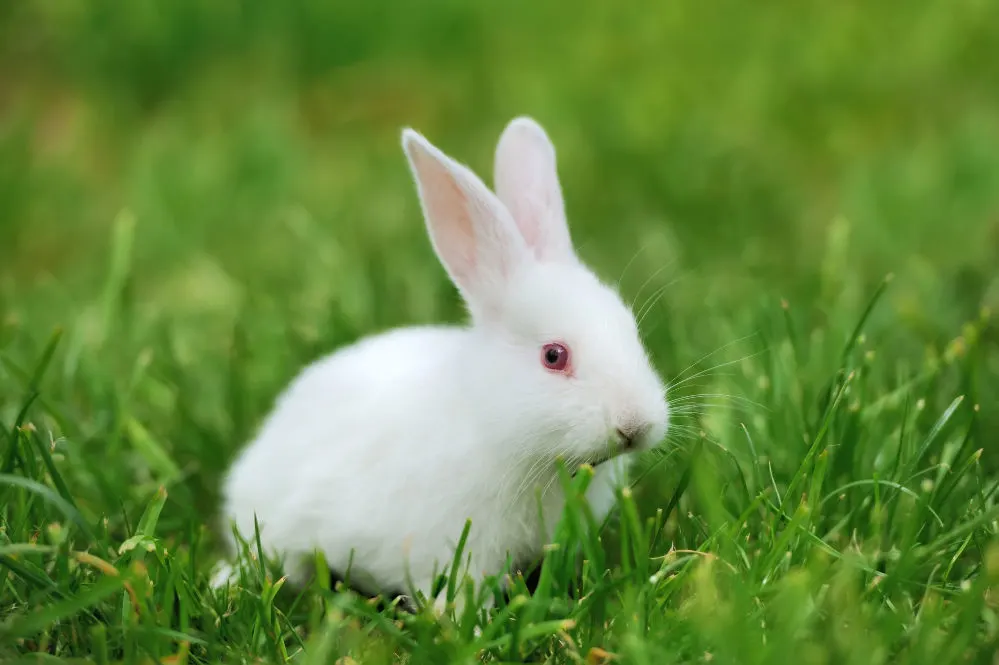
24. French Angora rabbit
The French Angora is the rabbit to choose if you want one that will stand out. Of course, to keep it clean and free of mats, their fur — also known as wool — needs constant care. Being around people, they’re friendlier and sweeter, making them the perfect pet for a couple looking to start a family.
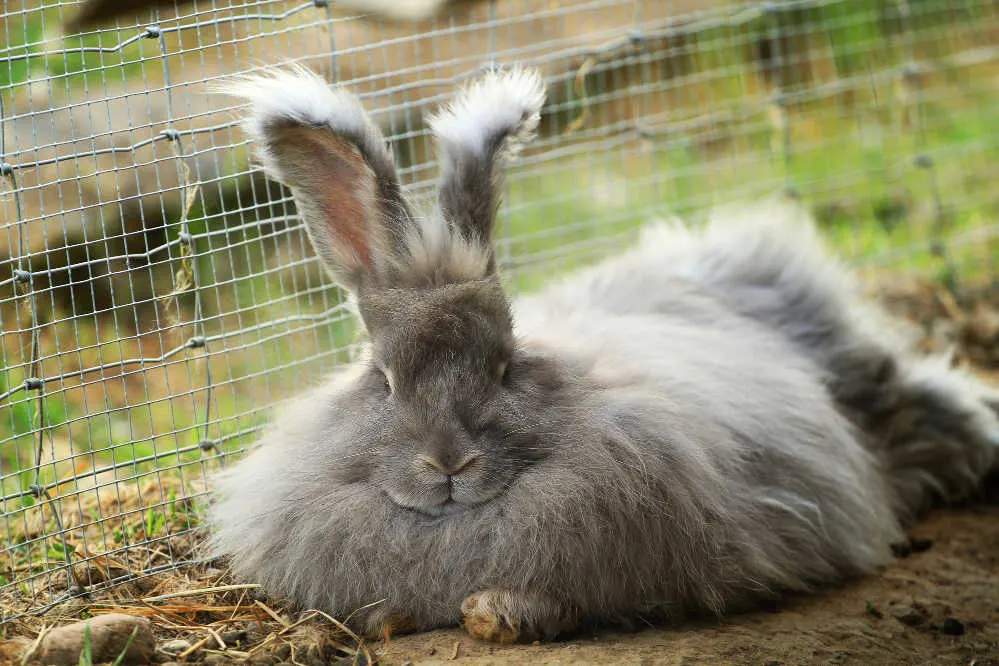
25. French Lop
The kind and wise character of the French Lop is well recognized. These lovely lopped ears and box-style heads are found on these medium- to large-sized rabbits. They require adequate grooming to maintain their smooth, dense coat.
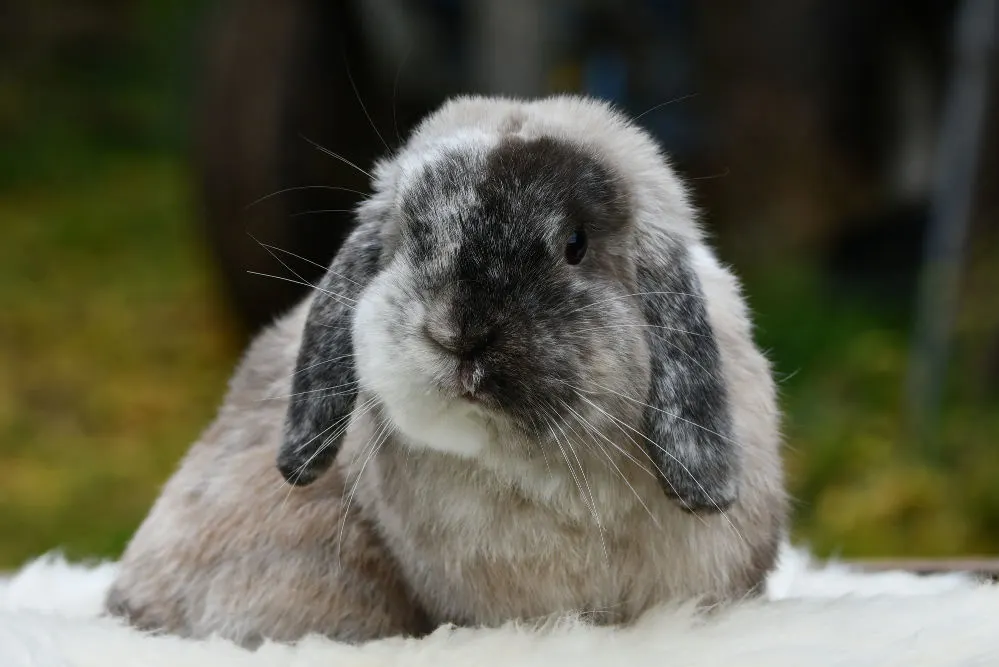
26. Giant Angora
The Giant was created primarily to generate wool. Its three types of wool — underwool, awn fluff, and awn hair — must be shorn because this breed doesn’t molt.
27. Giant Chinchilla
The Giant Chinchilla was created by Edward H. Stahl, who worked in the US. He aimed to develop a breed that could produce valuable Chinchilla fur on the largest pelt possible.
Since Edward H. Stahl was the first person to ever earn a million dollars through the sale of rabbit breeding stock, the Giant Chinchillas are known as “The Million Dollar Rabbit.”
28. Harlequin rabbit
The Harlequin, known as “the clown of the rabbit world,” enjoys investigating its surroundings, inch by inch, even after having done so a dozen times. They stand out because of their distinctive coat and markings. Their feet are likewise diverse colors, as are their ears and the various sides of their faces.
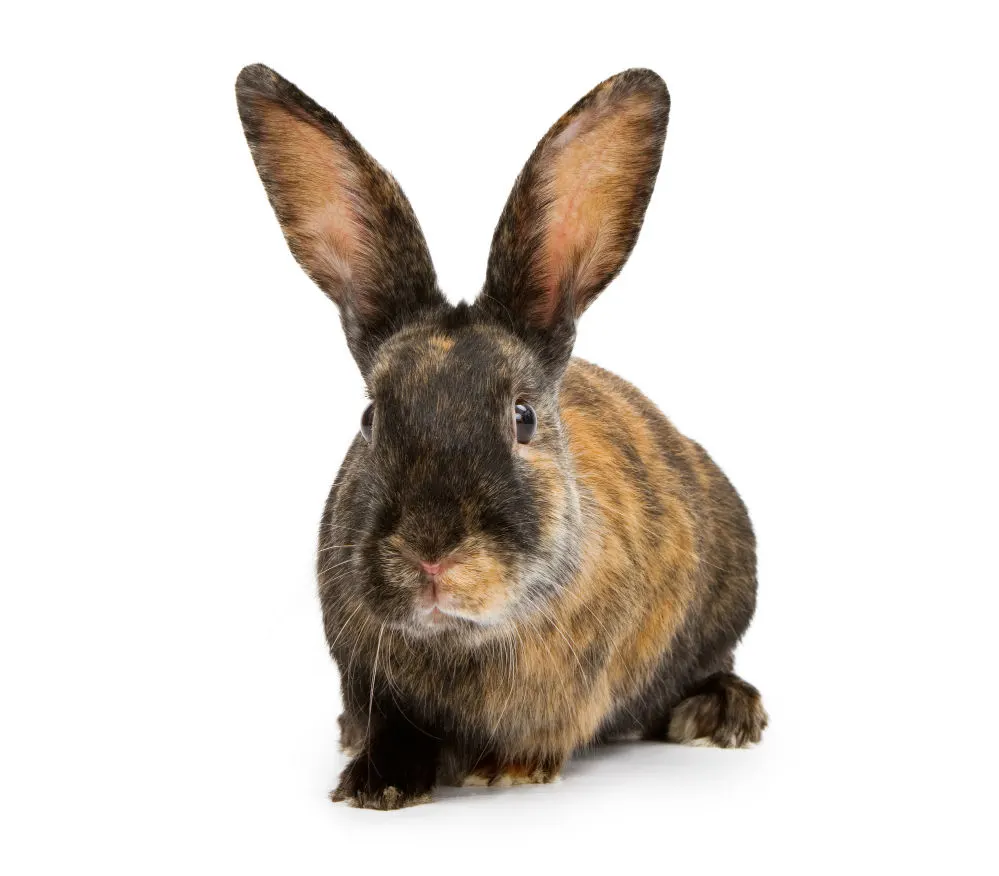
29. Havana rabbit
Because of its velvety, plush coat, the Havana rabbit is referred to as the “Mink of the Rabbit Family.” The Havanas have a short, dense, glossy coat.
Despite already being accepted in blue, black, lilac, and broken colors, their natural coat color is chocolate.
30. Himalayan rabbit
A stunning rabbit with pointed coloring akin to a Siamese or Himalayan cat, the Himalayan rabbit has a completely white body with darker “points” of color on the paws, lower legs, tail, and ears. Points can be lilac, blue, chocolate, black, or blue.
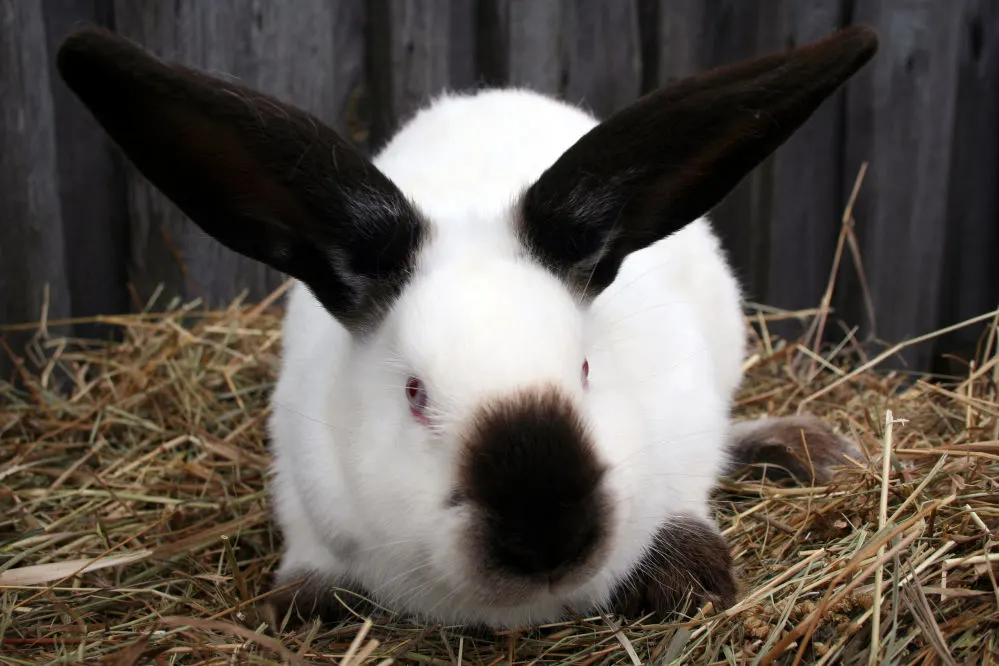
31. Holland Lop rabbit
This dwarf bunny is the ideal companion for urban residents because it has an incredible 14-year lifespan, only weighs 4 lbs (1.8 kgs), and has adorable floppy ears. If you have the room, give your Holland Lop a particular area where they may peacefully sunbathe, hop around, and keep their chew toys.
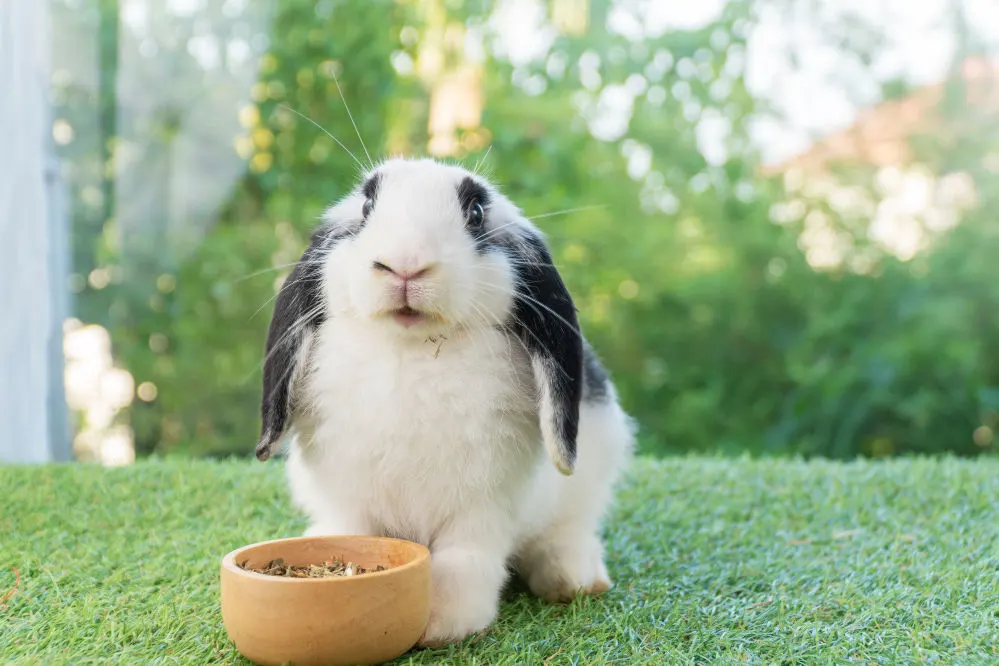
32. Jersey Wooly
The American Rabbit Breeders Association recognized the Jersey Woolly, a relatively new rabbit breed, in 1988. Unlike several other kinds of wool-coated rabbits, this dwarf breed’s woolen coat is simpler to maintain.
33. Lilac rabbit
The Lilac rabbit stands out from other rabbits due to its distinctive pinkish-dove-gray silky fur. Early in the 20th century, the breed was simultaneously developed in the Netherlands and England.
34. Lionhead rabbit
After gaining popularity in Europe, the Lionhead and its mane were recently introduced in the United States in the 1990s. They got their name from the fluffy lion’s mane, which makes them immediately recognizable. Any size family can comfortably accept this small lion into their home.
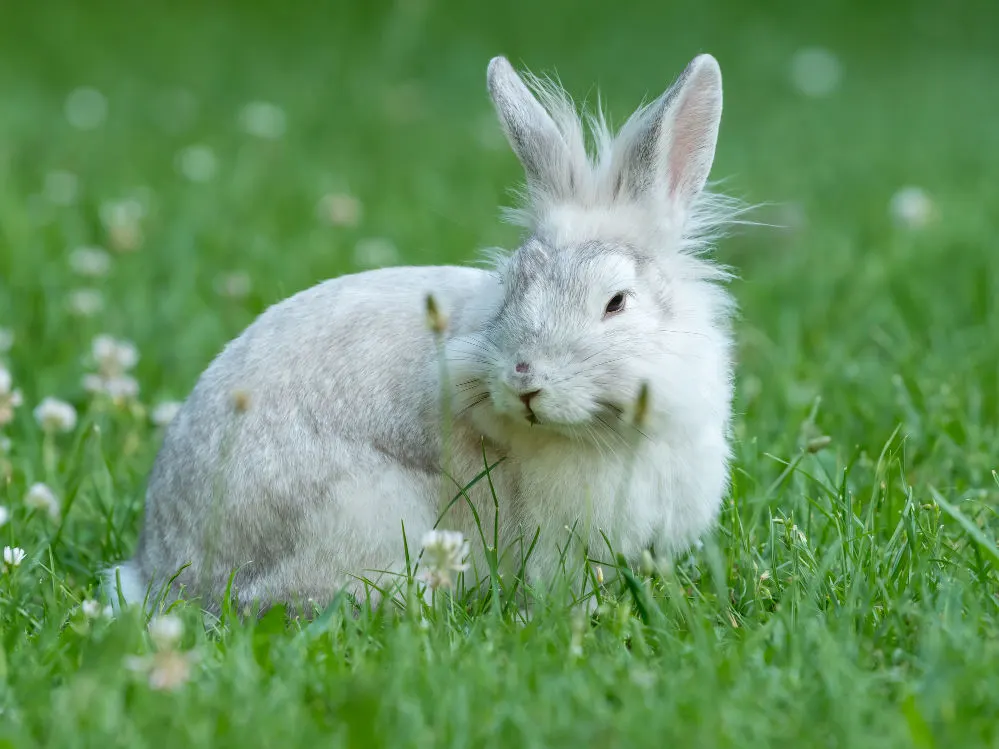
35. Mini Lop
A little breed of rabbit with lopped ears is called a Mini Lop. Its head is the size of a softball, and its body is small and stocky. The Mini Lop weighs between 4.5 and 6.5 lbs (2 and 2.9 kgs), making it heavier than the Holland Lop but lighter than the English Lop and French Lop.

36. Mini Rex
The Mini Rex is a minor variation of the Rex rabbit, a relatively recent breed recognized in 1988 by the American Rabbit Breeders Association. The Rex rabbit is well-known for its velvety, soft fur.
However, Mini Rex rabbits can only weigh up to 4.5 lbs (2 kg). They enjoy working out and, when socialized, get along with every family member.
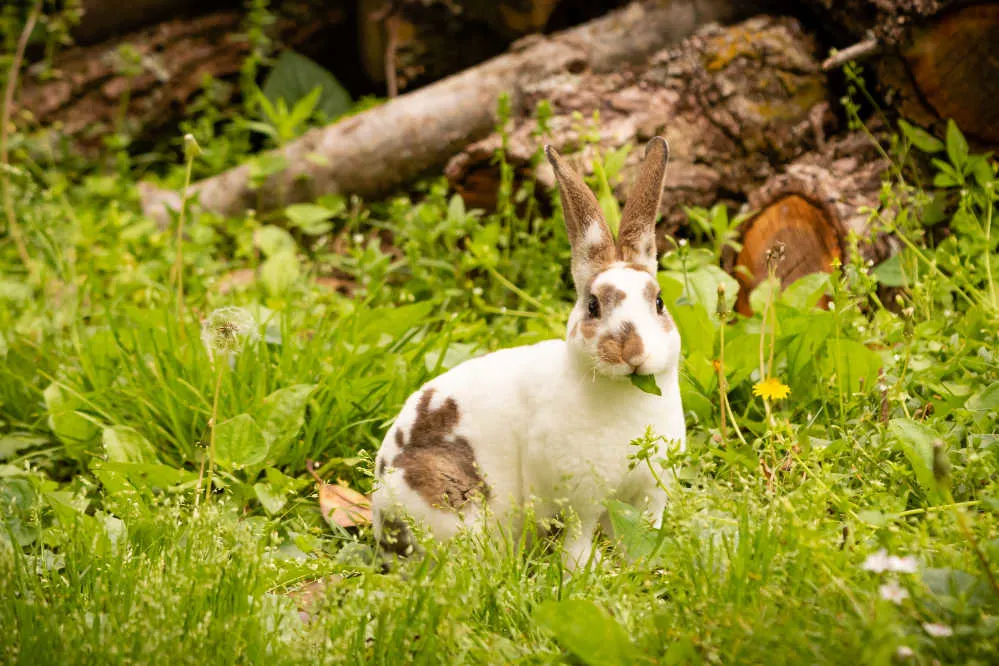
37. Mini Satin
Originally known as the Satinette, this breed was only available in the one show-worthy shade of white. But because this breed was so well-liked, others soon followed. There are 16 showable types of Mini Satin, so there is something for everyone.

38. Netherland Dwarf rabbit
The Netherland Dwarf is one of the tiniest rabbit breeds, weighing less than 2.5 lbs (1.1 kgs). Black, chocolate, blue, chestnut, chinchilla, Himalayan, fawn, lilac, steel, orange, tortoiseshell, blue-eyed white, and ruby-eyed white are just a few of the 25 hues available for the Netherland Dwarf.
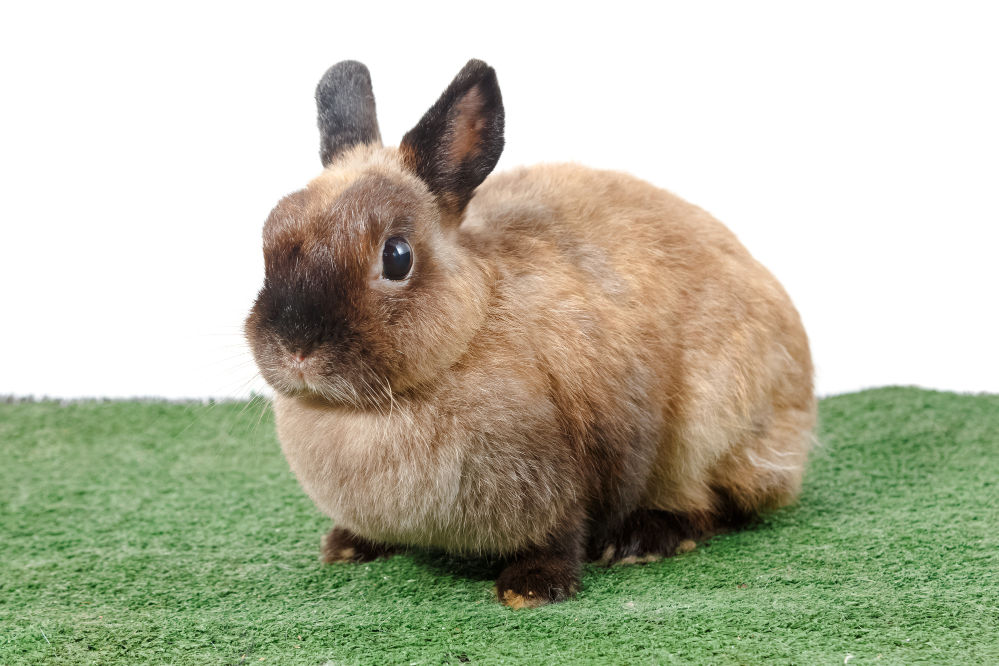
39. New Zealand rabbit
The New Zealand rabbit is a breed that was developed in the United States, despite its misleading name. White, red, black, blue, and broken are the five color variations available for the medium to large breed.
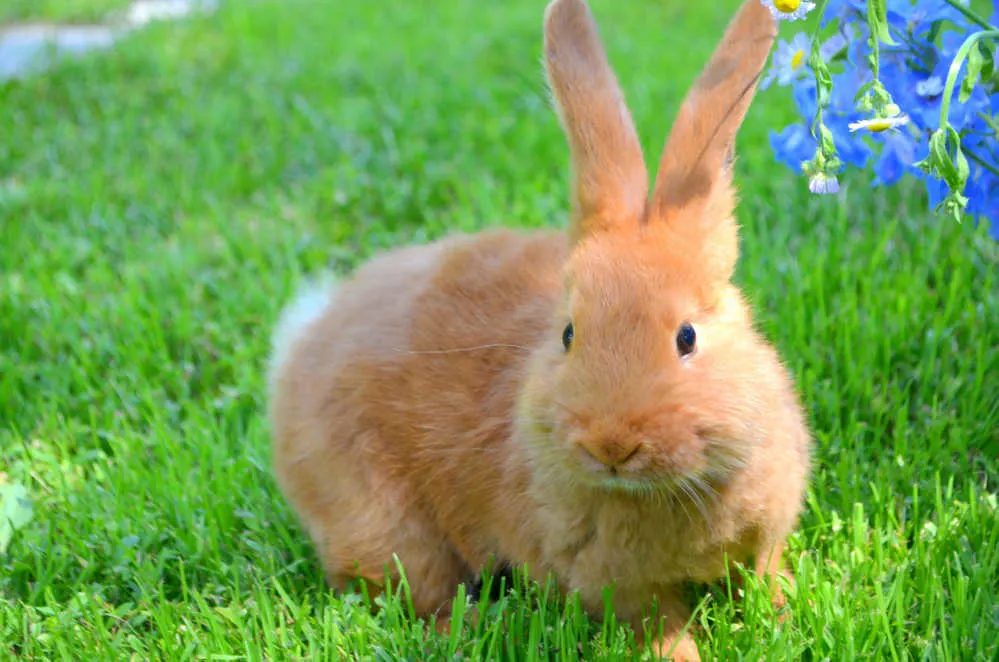
40. Palomino rabbit
Because of its golden coat, which resembles that of the well-known Palomino horse, the Palomino rabbit earned its name. The Palomino rabbit was produced in Washington state during the 1940s and 1950s. It is an American invention.
41. Polish rabbit
Somewhere between the Britannica Petite and Dwarf is the Polish rabbit. It is a very old breed, as evidenced by documents dating back to 1860.
They come in seven standard base colors and are known as the “Aristocrat” of the rabbit world.
42. Rex rabbit
The Rex rabbit, often known as the “King of the Rabbits,” is renowned for its short, dense coat of silky, fluffy, soft hair, which gives it a distinct feel. There are 16 different color options for the opulent coat.
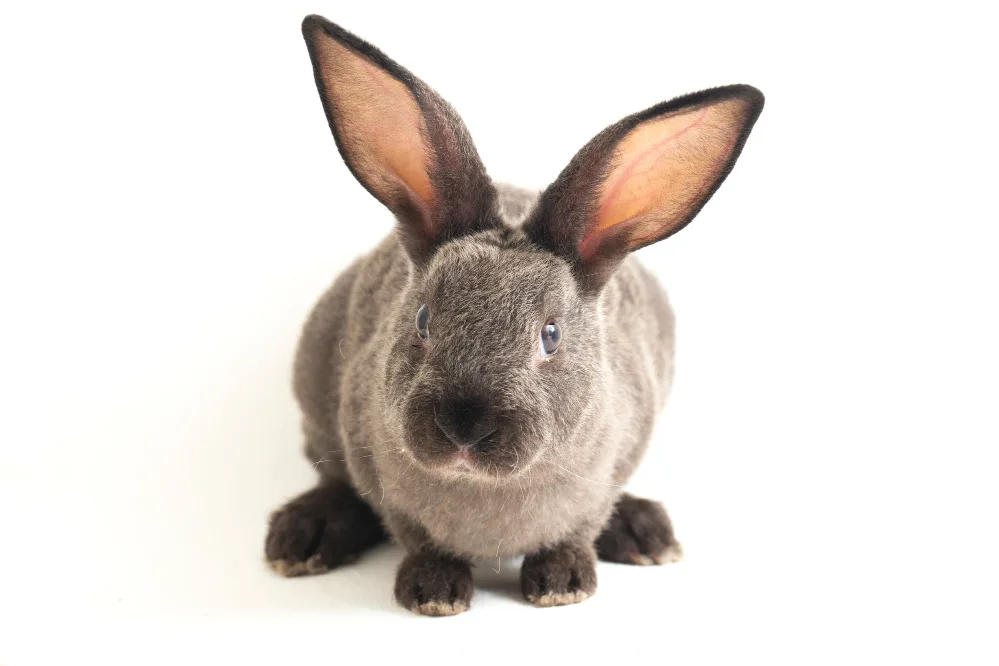
43. Rhinelander rabbit
The early 20th century saw the development of the Rhinelander rabbit in Germany. It is an “arched rabbit,” which refers to a body shape and posture that resembles a wild rabbit, looking alert and prepared to run away with its belly raised off the ground.
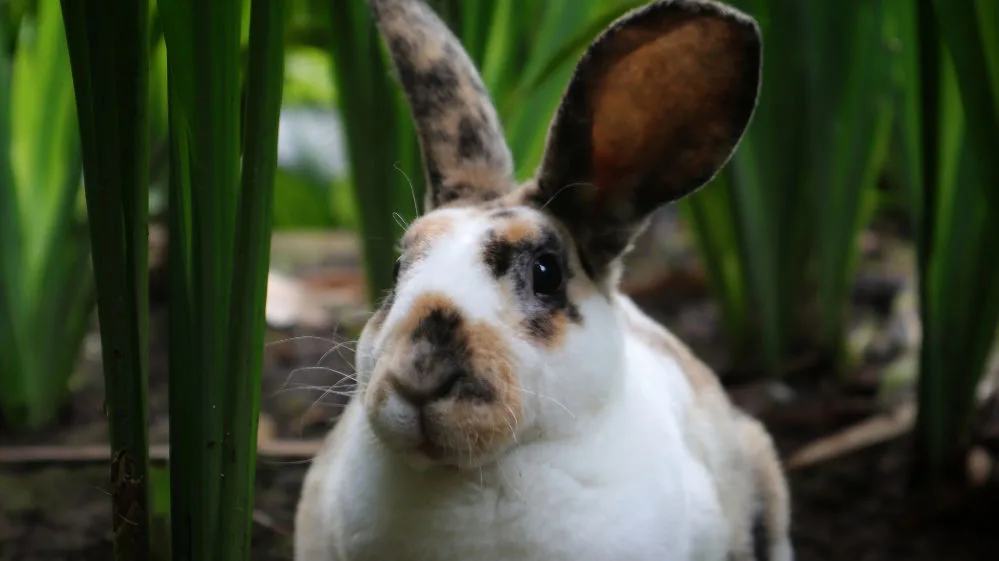
44. Satin rabbit
The Havana rabbit and the Satin rabbit are related. A gene mutation in a Havana rabbit litter led to the development of kits with shiny, satin-like coats. Satin bunnies are available in 11 exquisite hues.
45. Satin Angora
In 1987, the commercial Satin Angora was officially recognized as a breed. The breed is distinguished by its unique silky wool, which has a distinctive sheen and is regarded as some of the most precious of all wool.
46. Silver
The Silver rabbit gets its name from its unique coat, which is made up of white hairs blended with one of three colors (black, brown, or fawn), giving it a lovely silvery tint.
With documented records dating the species to at least the 1500s, the Silver rabbit is said to be the oldest domesticated rabbit breed.
47. Silver Fox
The Silver Fox was actually the third breed of rabbit to be produced in the United States. The breed has a thick, jet-black coat with a silvering appearance akin to the silver Arctic fox. The Silver Fox is a rare breed that the Livestock Conservancy considers a heritage breed.
48. Silver Marten
When Chinchilla rabbit breeders attempted to improve the breed by introducing black and tan rabbits, they unintentionally created the Silver Marten. The most popular Silver Marten species have shades of black, blue, sable, and chocolate coats.
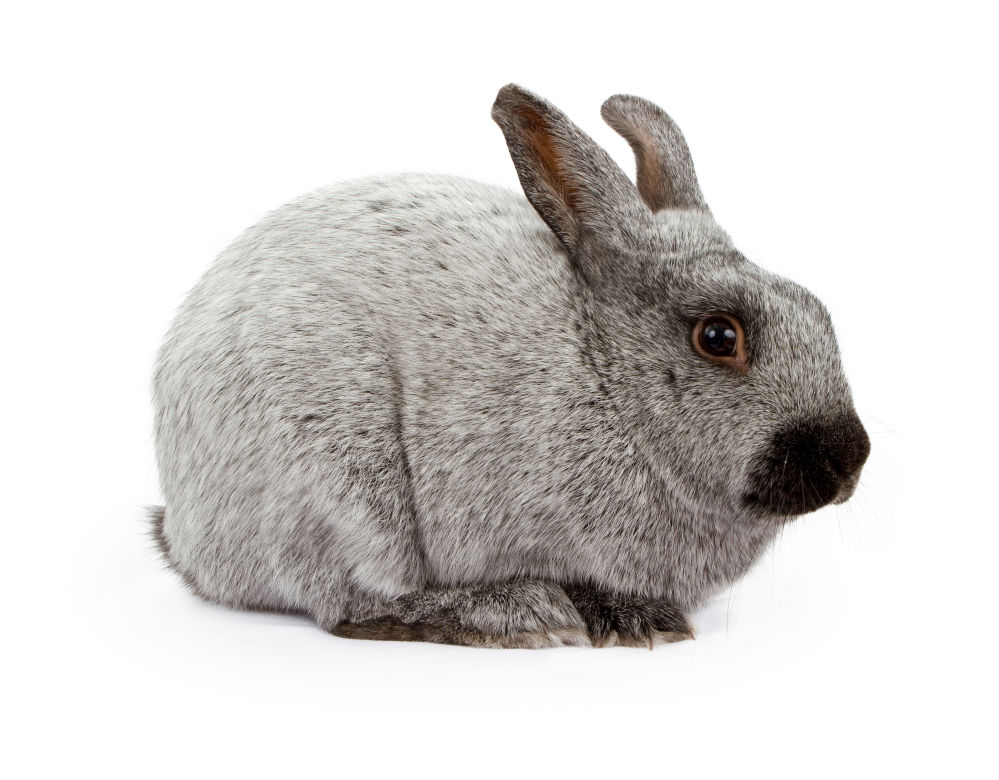
49. Standard Chinchilla
The Standard Chinchilla swept the US in the 1920s. Breeders understood that the breed’s fur would be quite valuable. Following the Belgian Hares, the Standard Chinchillas became extremely popular almost overnight.
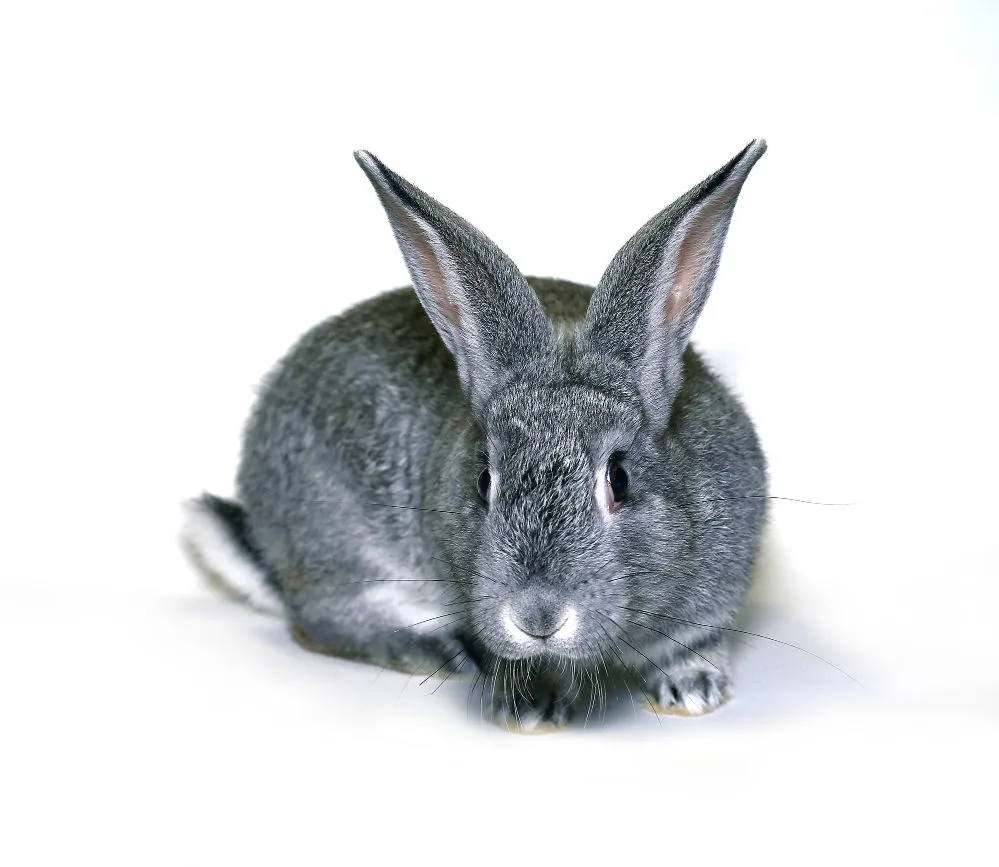
50. Tan rabbit
Tan rabbits are bi-colored, with dark shading of a different hue (black, blue, chocolate, or lilac) on the back, flanks, and head. They have red-orange markings. The full-arched breed of Tan rabbits resembles its ancestors.
51. Thrianta rabbit
The Netherlands is where the Thrianta rabbit was created. They have fawn coloring on their tail and paws and are red. Thriantas have medium-length, silky, short fur. Adults typically weigh 5 to 6 lbs (2.2 to 2.7 kgs).
Final thoughts on bunny breeds to keep as pets
Hopefully, one of these gorgeous fluffy bunnies caught your eye. There are many different rabbit breeds, meaning you are bound to find the perfect friend for your family.
Rabbits were created for many different reasons. Whether it be for their fur, show potential, or rabbit meat. However, today bunnies have become a household name in the pet scene. More and more people are adopting these fluffy cuties to keep as pets. And who wouldn’t want a pet rabbit? Just look at their little ears!
If you need more information, look at the best indoor rabbits to see whether one of these hoppers can be part of your family.
Steph Dyson is a travel journalist by trade but a lover of all small pets. She’s been a pet mum to everything from gerbils to guinea pigs, rabbits to hamsters, and fish to dogs of all shapes and sizes. She wants to share her years of experience with small pets and make Small Pet Guides the go-to website for pet owners seeking information and care advice.

